Why Does My Fish Stick To The Pan?
A while ago, I had quite a lengthy discussion of how to properly pan fry or saute fish to prevent it from sticking. There was so much conversation about it that it would make a good article. We’ve all experienced that awful feeling when you try to turn your fish in the pan and it won’t turn. Hopefully, this lesson will give you the tools you need to cook a piece of fish perfectly.
The first thing to understand about fish is that it is very high in protein and relatively low in fat. This can make for a very healthy meal, but it also is a recipe for disaster if you need to know what you’re doing. I’ve been there.
Protein Sticks
It is what glue is made from. If proteins are allowed to denature – chemically unravel slowly – they stick firmly. Have you ever tried to clean up egg white that has spilled onto and dried on the stovetop? It is a mess.
Since proteins stick when they slowly unravel, you have to ensure they cook quickly. This means the heat must be high enough to start setting the proteins immediately.
There are a few keys to ensuring a lovely, seared piece of fish:
- Medium-high heat
- Hot pan
- Dry fish
- Time
Temperatures Are Important
As was pointed out in the discussion on the forum, browning doesn’t start until 320° F, so the surface of your pan must be at least that hot before you add the fish.
Since the temperature in the pan will drop when you add the fish, please make sure that the fish isn’t at refrigerator temperature so the heat will recover more quickly. You can take your fish out of the refrigerator at least fifteen to thirty minutes before you cook.
Preheat a well-seasoned cast iron skillet or other wide, heavy-bottomed pan over medium-high heat until a few drops of water immediately boil violently and evaporate after a few seconds. This is a great way to know when a pan is hot enough to saute or pan fry.
Dry Fish Is Important
If your recipe says to rinse the fish off before cooking, make sure that you pat the fish dry. You’ll likely cook the fish in butter, oil, or some combination and fat and water don’t mix. So make sure you remove as much water from the surface of the fish as you can.
Add just enough oil to coat the bottom of the pan. Remember, we are discussing pan frying or sauteing, not shallow frying. The distinction between these terms will be discussed in a future post because the more I read about these two cooking techniques, the more confused I get. You can brush some directly on the fish if you tend to be heavy-handed with the oil.
Skin Side Down
Let the oil heat up until it shimmers in the pan before adding the fish. If you’ve brushed the oil directly on the dry piece of fish, place it in the pan, skin-side down (if it has skin), and let it sit. I say skin side down because most chefs I’ve talked to about this say you always put the finished side (the side that will be seen when plated) down first.
I don’t think it’s because the pan (or grill) is hottest before you add the fish and you get the best grill marks. When the fish hits the pan, it absorbs some heat and cools down a little. Doesn’t it always seem the flip side of whatever you’re cooking doesn’t have as good grill marks?
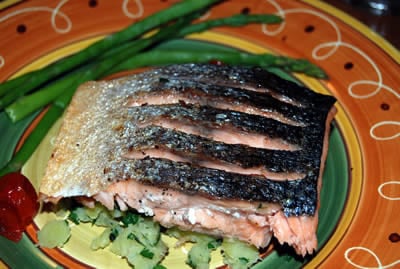
Skin Side Up
I know another chef who disagrees with “skin side down.” He suggests always cook fish, chicken, and meats skin side up. His logic is the heat from the pan, or grill pushes the internal juices away from the heat source to the opposite side. When you flip the fish (chicken, meat) over, the skin helps prevent the juices from leaking out.
I’m not sure his theory is scientific or what Harold McGee would say, but it seems logical, and I often cook chicken breasts with skin on them. Try cooking two pieces of fish or chicken, starting with one skin side up and the other skin side down. Cook them precisely the same and see if there is any difference in moistness. Be sure to look to see if any juices leak out.
Don’t Play With Your Food
As I was reading over the forum discussion, one sentence jumped out at me: “I didn’t move it in the pan until it was time to turn.” Remember your mom always tells you not to play with your food? The same is true when cooking fish, or any protein for that matter; the only way you will know when it is time to turn it is when the protein naturally releases from the pan.
If you rely on a recipe’s instruction to “turn after three minutes,” you could run into trouble. When a protein has browned nicely, it will release from the pan with minimal sticking, if any at all.
Place the fish skin-side (or prettiest side) first in the pan and wait to move it until it lets you. Adjust the heat so you hear a good sizzle but not very loud sputtering and popping, and allow the fish to cook and develop a nice sear. It takes as long as it takes, but don’t walk away. You have to be ready to turn it when it is ready to give.
After the first three minutes, try lifting the fish with a wide fish spatula. If it releases easily, gently turn the fish. If not, give it about another 30 seconds and try again. Please don’t force it, though. You shouldn’t have to scrape with the spatula.
Don’t Overcook
Once the fish releases, turn the fish and let it cook until it is firm and opaque but not yet flaking. If you let it flake in the pan, you will overcook your fish due to carryover cooking.
The same searing technique applies if cooking a thicker cut of fish to be finished in the oven. Place the presentation side of the fish in the hot pan and let it sear until it releases. Turn the fish, sear until lightly golden and then finish in the oven until the fish is firm and opaque but not flaking. Again, carryover cooking comes into play, so make sure you allow for that.
Some people will dust a piece of fish with a light coating of seasoned flour to help keep it from sticking. This is a perfect way to cook fish, primarily if you serve it with a thickened pan sauce since the flour on the fish mixes with the oil in the pan to form a roux. However, if you follow the rules of hot pan – hot oil – dry fish – time, you will find that you don’t need the added insurance of the flour and will only use it if you want to.
What’s Your Favorite Technique
These tips and techniques should help you cook fish without sticking to the pan. But, of course, if you have your favorite methods for keeping fish from sticking, we would love to hear from you on Facebook or Google+.
Some of My Favorite Seafood Recipes

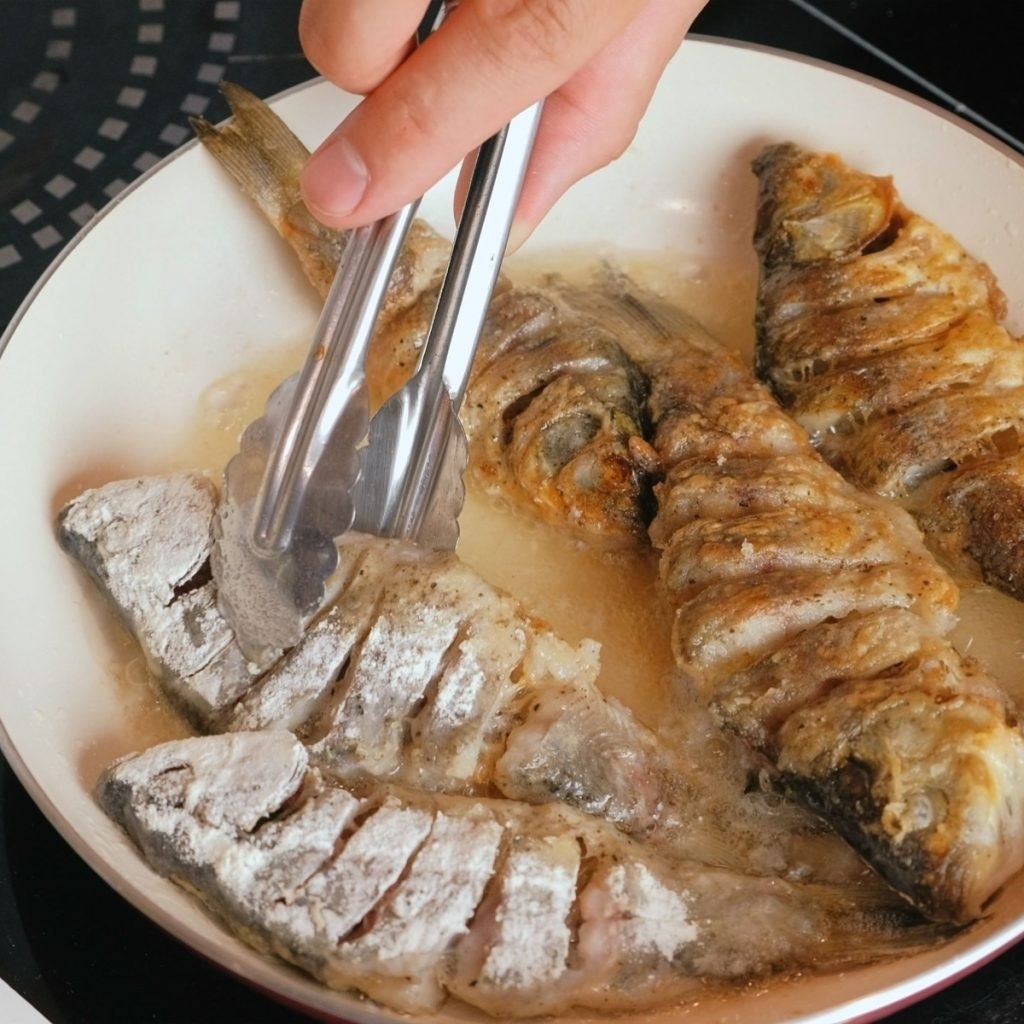
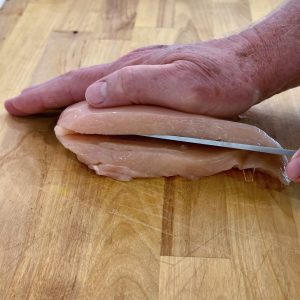
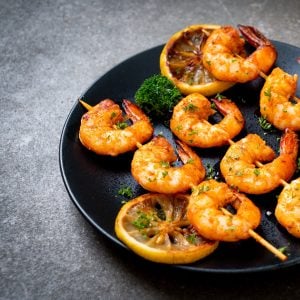
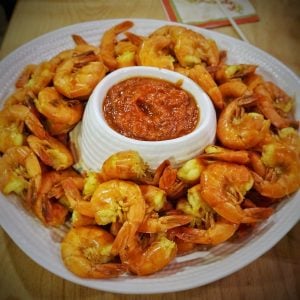
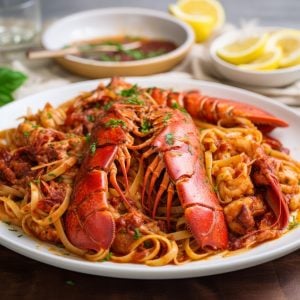
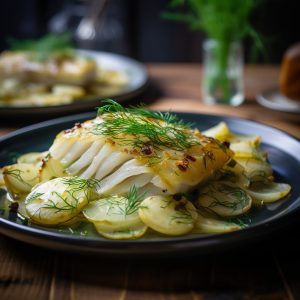
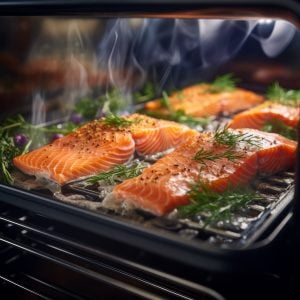
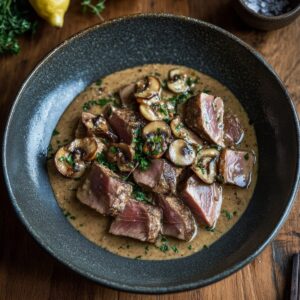
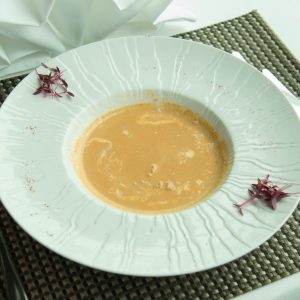
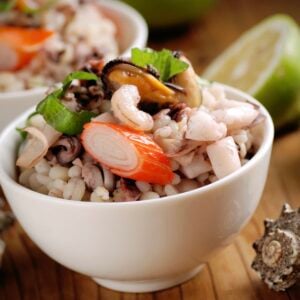

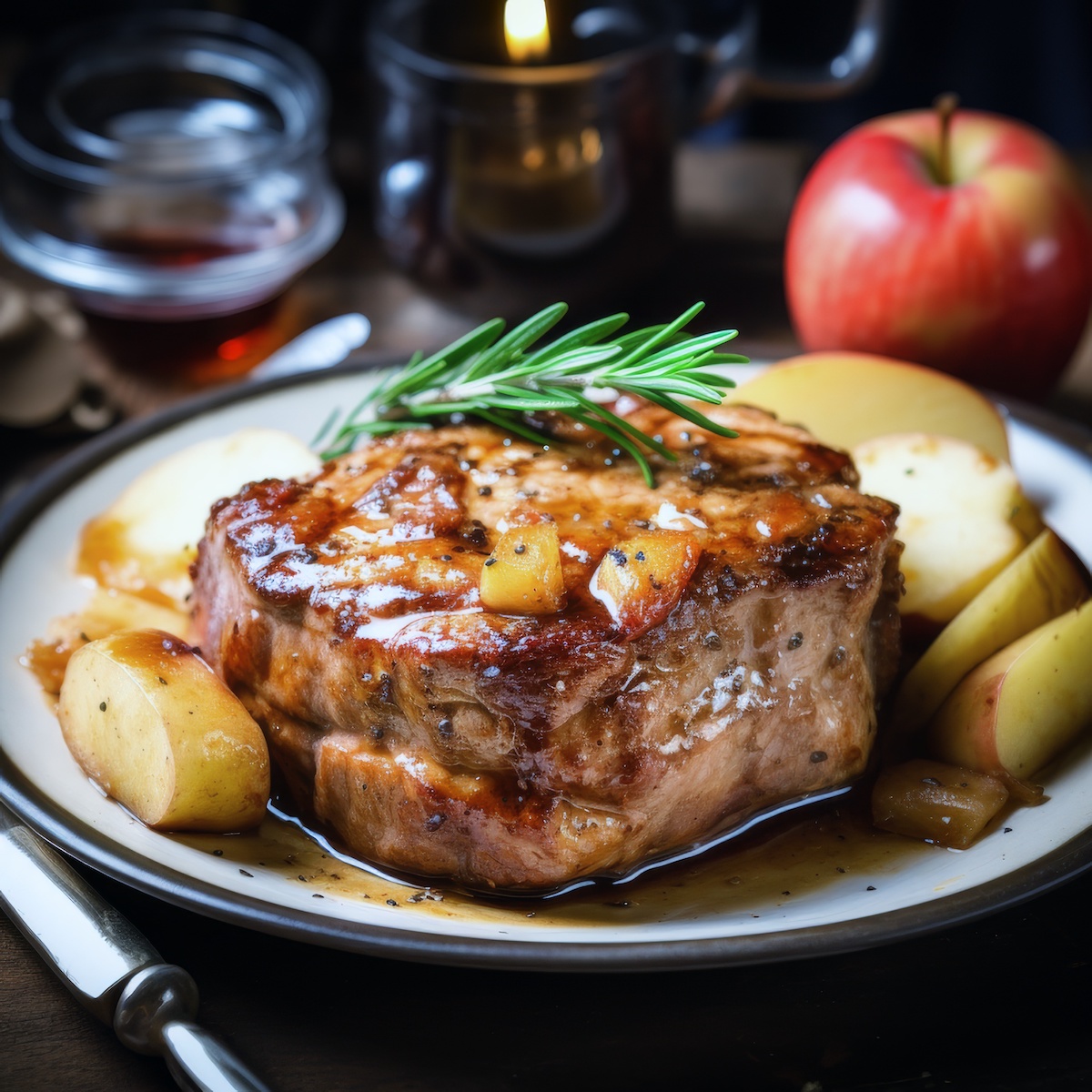

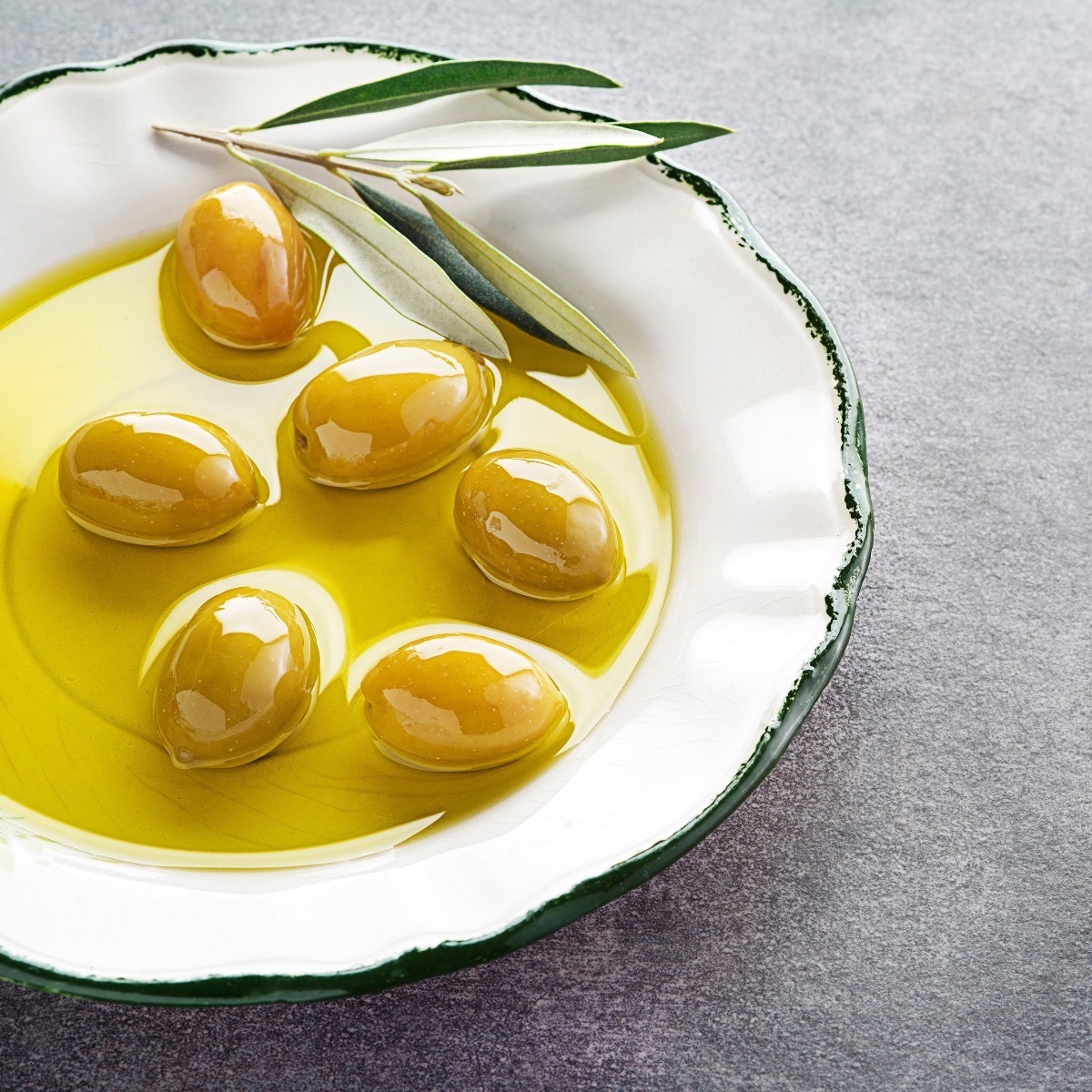

45 Responses
My favorite method to keep fish from sticking is to have someone else cook it. Next best is deep frying.
I like seafood just fine, but have not had the best luck cooking it. Steak, pork, veggies … no problem, but fish is my bane … my Achilles heel … my white whale, as it were. (Oddly appropriate, n’est-ce pas?)
cooking fish is hard I think, so we almost never have any which is a mistake of cause, but sure looks good.
Hi, you’re great. You should make sure the meat or fish is dry or it will not cook properly.
Great advice Simran – RG
Thanks RG! I cooked catfish steaks over the weekend using these tips. It worked exactly as you said. At 3 minutes the fish didn’t release. 1 minute later it did with gentle lifting and without pulling my steaks to pieces. I love it when a plan comes together. Thanks again!
You are very welcome Kendal and thanks for letting us know about your results. – RG
I pan roasted $50 worth of sea bass for my mother-in-law’s 90th birthday last night. It was good, but it stuck to the pan. Now I know why, and I sure wish I had read this beforehand!
Thanks RG – just found your site and I’ll never try anything new again without checking with you!
Hi Margo, thanks for the kind words and sorry about the sea bass. Let me know how it turns out next time. – RG
I think brushing the oil/fat onto the fish is a mistake – you don’t know the temperature of the pan. Even if the water droplets evaporates, does the decent chef know what temps dictates the speed of evaporation? In addition, since you need at least 320 F, evaporating at 280 F does no good. Pour a thin layer of oil in the pan, slowly increase heat from low-med to med to med-high and wait for the first wisps of smoke…that’s the time to add the fish/meat – hot enough to sear yet not hot enough to burn the fat/oil. Obviously, don’t wait for plenty of smoke, because that might be too late. Now, if you want to brush fat/oil onto the fish in addition to oiling the pan, that’s another story. It goes without saying that you should know your smoke points, but most are within 50F of 400F.
Thank you.
Great points JM. Thanks – RG
I was told that I would know that the fish would not stick if I heated the oil in the pan until I would be able to “slide” a corner of the fish without it sticking…It has worked for me…and, yes, the fish needs to be dry and at room temperature.
Hi Carol, thanks for the tip. – RG
You may want to try adding some salt to the heated oil before putting the fish skin side first.
Very simple technique.
1. Heat pan.
2. Add oil and heat til almost smoking.
3. Add fish presentation side down.
4. Shake pan immediately.
5. Shake pan occasionally until fish starts to release.
6. Turn fish, shake, cook til done (or finish in oven).
Voila!
Sounds easy enough, but you would be surprised how many home cooks struggle with this. Thanks for sharing your technique Paul. – RG
I’d like to be able to shake my heavy cast iron pan without bubbling the fat all over myself but it’s scary. It’s good to know how chefs do it though.
Hey Barb, so would I. – RG
Paul is close, but no cigar. Steps 1, 2 and 3 are right on. But the rest are problematic. Don’t move the fish until you are ready to turn it over. Sticking is not a permanent process. With hot oil and no disturbance the fish will release itself. Watch the side of the fish pieces and turn when it is almost done. Cooking on the skin side will be quite brief. Squeezing fresh lemon on the fish with a bit of salt while it is skin down works well. Cast iron pan works well but with this technique stainless also works.
Hi Tom, thanks for your suggestions. – RG
Just caught up with your site. The next time I cook fish I will use your method. Something I dislike, terribly, is the white ooze that comes from salmon. I found that ten minutes in a brine helps to keep the protein where it belongs. Do you have another suggestion?
Hi Bill, thanks for the brining suggestion. I do not but I will ask around or maybe someone else has some ideas. – RG
I would lik to know how much salmon to serve 10 people
Hi Lucy, it really depends on who those 10 people are. Big eaters, dieters, kids, seniors? As a rule of thumb though, think 3/4 lb to 1 lb per person when serving a whole fish and 1/2 lb to 3/4 lb when dressed and cleaned and 1/3 lb to 1/2 lb when serving fillets or steaks.
What great advice you distilled for us, thanks for putting this together. I was sitting here after eating the red snapper which I cooked skin side down first, but tried moving it OVER AND OVER and needless to say the skin was not attached to the fish by the time i was done – I deglazed with vermouth after the fish was done and out of the pan and got the crispy skin onto my plate that way. But I will try your method next time and let you know!
Thanks to Google and your blog I hope I’ll get it right next time.
Hi Julia, let me know how it works out for you next time although it sounds like you saved a delicious meal with your quick thinking. – RG
I have seen somewhere on the web- on the science of protein not sticking, that as you heat the SS pan you want to finger flick droplets of water into it and you will see the various stages of readiness- going just beyond the water evaporating quickly, at the next stage the droplets roll and dance around in the pan- that is the point that the food will not stick- just brush in some oil and slide the fish in, lowering heat as not to burn.
Great points Carl. You may have seen this idea at my How Hot Should You Heat Your Pan When Sauteing? Thanks for bringing it up here. – RG
I’m an avid fisherman and only keep the fish I will eat. I’ve found that filleting a 1 to 5 lb fish with the scales/skin still on and grilling scale side down with a quick flip after seasoning to “sear” the up or meat side works great. Just eat the tender, seasoned fish out of the skin like a oyster out of a shell.
Hmmm Jerry, sounds delightful. – RG
My fish always flakes when I make it! Great post definitely a Bookmark – Jules
Whether the pan and the oil/butter/margarine are hot or not, dusting thoroughly dry fish with cornstarch will prevent it from sticking to the pan, and will form a light, golden crust on it.
I just used this technique and I’ve NEVER had a cleaner fish-cooking experience in my life. My pan looks immaculate; and compared to the usual 20 minutes that I need to spend scraping hardened fish particles off my pan, this is no less than a pre-Christmas miracle. Thanks so much!
You are very welcome and a Merry Christmas to you. – RG
Growing up my mother always cooked fish we caught as kids in a heavy cast iron pan and the crisp skin was always sought after…get yourself a heavy cast iron pan…bye George…(~.-)
my question is: “how do I remove the fishy oil out of the pan after cooking?”. Oil & water don’t mix, so there must be another way to clean the pan. Help!
Mika
I know this is Nov.2014 but if U happen to see this here is your answer.
Put about 1/2 to 2/3 cup of vinegar in the pan & bring to a boil & boil 3 to 5 minutes.
Let cool & U will have NO problems.
GOD bless
Hi Mika, how much oil are we talking about? Did you fry the fish or saute it? Usually I just use a paper towel to wipe out the pan of any residual oil and then wash it with soap and water. Oil and water don’t mix but a soap and water will clean the fish oil off the pan. – RG
I’m wondering if there are additional rules concerning different oils for white fish, v/s dark ones? Also, (since we’re talking sautes,) I usually dress my fish steaks in duxelles or salsa, which introduces additional problems, like when to add the obligatory splash of wine, and whether or not to marinate with fish sauce & herbs first, or to introduce those flavors in a separate sauce?
Nice one, my flounders were actually sticking in the pan when I “Googled” up your site, I quickly turned the heat up and left it to release itself and Bingo !, golden brown flounder intact. Thanks
I came across this article yesterday and tried it last night. Perfect.
Just discovered you..and thank you for the great details on pan searing and preventing fish from sticking. So I’m off to try the chilean seabass recipe. I’ll be back!
They are are really good tips but if I may! Can I add that if you have a nice big fillet you should slice the skin several times with a sharp knife. This is to prevent it from curling up.
That’s all 🙂
Very well written article. It not only tells what to do but why you are doing it.
The reason for cooking skin side down when cooking small pan fish is so they don’t curl up
Sorry error. Should have said skin side down first.
Sandy, I think it does.
I am trying this tomorrow with a large salmon filet. 🙂
Fingers crossed!
Generously spray PAM With Flour for Baking on grates. First time using it today and they were almost hard to keep from sliding off my smoker grill.
Your tips on keeping fish from sticking to the pan were a revelation to me, as I have been dealing with this problem for a while. Thanks so much.
You are very welcome Sharon.
My god, i ALMOST had a total meltdown today when my cod stuck to the pan, i should have read this article beforehand, thanks a lot!
Great info and comments here. Any tips for making sure the fish is dry enough (without pressing and/or using a roll of paper towels)? I get a lot of frozen wild caught fish and it is normally totally saturated when I take it out of the package. I have followed these tips with success (and thank you!) but the frozen fish not so much— seems to be my stcking point (!)
How about placing the fish in a colander and letting it drain for a while before patting dry with a paper towel?
Tried again and again and again and still always sticks to the pan until it burns. I’m just convinced at this point this is all nonsense.
Well that’s the first time I’ve cooked fish without it sticking and the first time I’ve gotten trout skin crispy on a skillet! Thank you very much for this fantastic post!
You are very welcome. Thanks for letting me know.
I grew up fishing brook trout. We would always set up a 12 inch cast iron over a cook fire and bring butter and oil with us. Trout would come out of the river, get cleaned and filleted and go right in the smoking pan. But the most important part of the cooking process was the heat of the pan. Skittering droplets that dance on the cast iron is what to look out for.
Thanks for the great write up!
Thanks Zackary for sharing your trout story. That’s how I have had trout several times and I remember how incredibly fresh everything tasted.